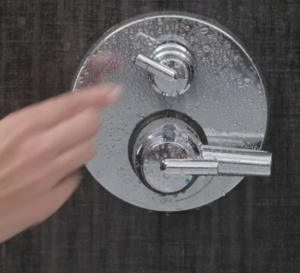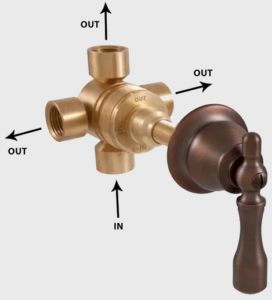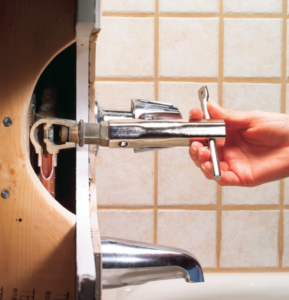 The bathroom is your temporary get away from the stresses of life. You close the door, turn on the shower, and start to sing your troubles away. But if your shower diverter isn’t working right, the bathroom could become a source of stress rather than an escape from it. Learn more about how a shower diverter works and when you might want to call the professionals at Cass Plumbing to install one or replace the one you already have.
The bathroom is your temporary get away from the stresses of life. You close the door, turn on the shower, and start to sing your troubles away. But if your shower diverter isn’t working right, the bathroom could become a source of stress rather than an escape from it. Learn more about how a shower diverter works and when you might want to call the professionals at Cass Plumbing to install one or replace the one you already have.
What is a Shower Diverter?
A shower diverter valve is what allows you to choose between filling your bathtub and taking a shower. In short, it diverts water up into the showerhead instead of coming out of the tub spout.
 The user typically adjusts the faucet to the preferred water temperature before activating the diverter and sending water to the showerhead. If you encounter a diverter you’re not familiar with, be sure to start the water while standing outside the shower to ensure you don’t get scalded.
The user typically adjusts the faucet to the preferred water temperature before activating the diverter and sending water to the showerhead. If you encounter a diverter you’re not familiar with, be sure to start the water while standing outside the shower to ensure you don’t get scalded.
If you don’t already have a combination bath/shower, installing a shower diverter is an easy way to add a showerhead, saving space and money compared to installing a separate shower enclosure. It’s also possible to replace a leaky or faulty shower diverter with a new one.
Types of Shower Diverters
Each type of diverter does its job well, so deciding which one to install is usually based on the style, finish, and overall look the homeowner prefers. If you have ever stayed at a friend’s house or in a hotel, you have probably seen different shower diverters in action.
 There are three types to choose from. Here’s how they work:
There are three types to choose from. Here’s how they work:
- Three-valve shower diverter: Tubs with separate hot and cold handles may have a three-valve diverter located between them. Turn this third handle clockwise 180 degrees to send hot and cold water to the showerhead. Turn the diverter handle counter-clockwise to restore flow to the tub spout.
- Two-valve shower diverter: This type of diverter may be located in the center of a single-handle faucet or between the two handles of a two-tap faucet. It also works by turning the valve to divert water to the showerhead.
- Tee diverter: This single-valve diverter is located on the end of the tub spout. The user pulls up on the diverter arm to send water to the showerhead. Pushing the arm down restores flow to the tub spout.
 Shower Diverter Problems
Shower Diverter Problems
Some of the most common issues that develop with shower diverters include:
- Leaks: If water leaks below your bathtub, considerable water damage can occur to the floor and walls.
- Low water pressure from the showerhead: Sometimes the diverter doesn’t transfer all the water to the showerhead, causing low water flow from the tub spout and the showerhead simultaneously.
- Difficulty switching between the tub faucet and showerhead: The diverter may need to be cleaned or replaced if it becomes difficult to activate.
To reduce strain and wear on the valve and help prevent these problems, always release the diverter and allow water to flow from the tub spout for a few seconds before shutting off the water.
Shower Diverter Installation & Repair from the Professionals at Cass Plumbing

 When you’re craving a shower instead of a bath, you need a functional shower diverter. Let Cass Plumbing, the Tampa plumbing experts, fix your faulty valve or install one for the first time to convert your tub into a bath/shower combination. We offer fair prices and quality work to get your bathroom up to speed. Contact us today for the plumbing installation or repair you need.
When you’re craving a shower instead of a bath, you need a functional shower diverter. Let Cass Plumbing, the Tampa plumbing experts, fix your faulty valve or install one for the first time to convert your tub into a bath/shower combination. We offer fair prices and quality work to get your bathroom up to speed. Contact us today for the plumbing installation or repair you need.






